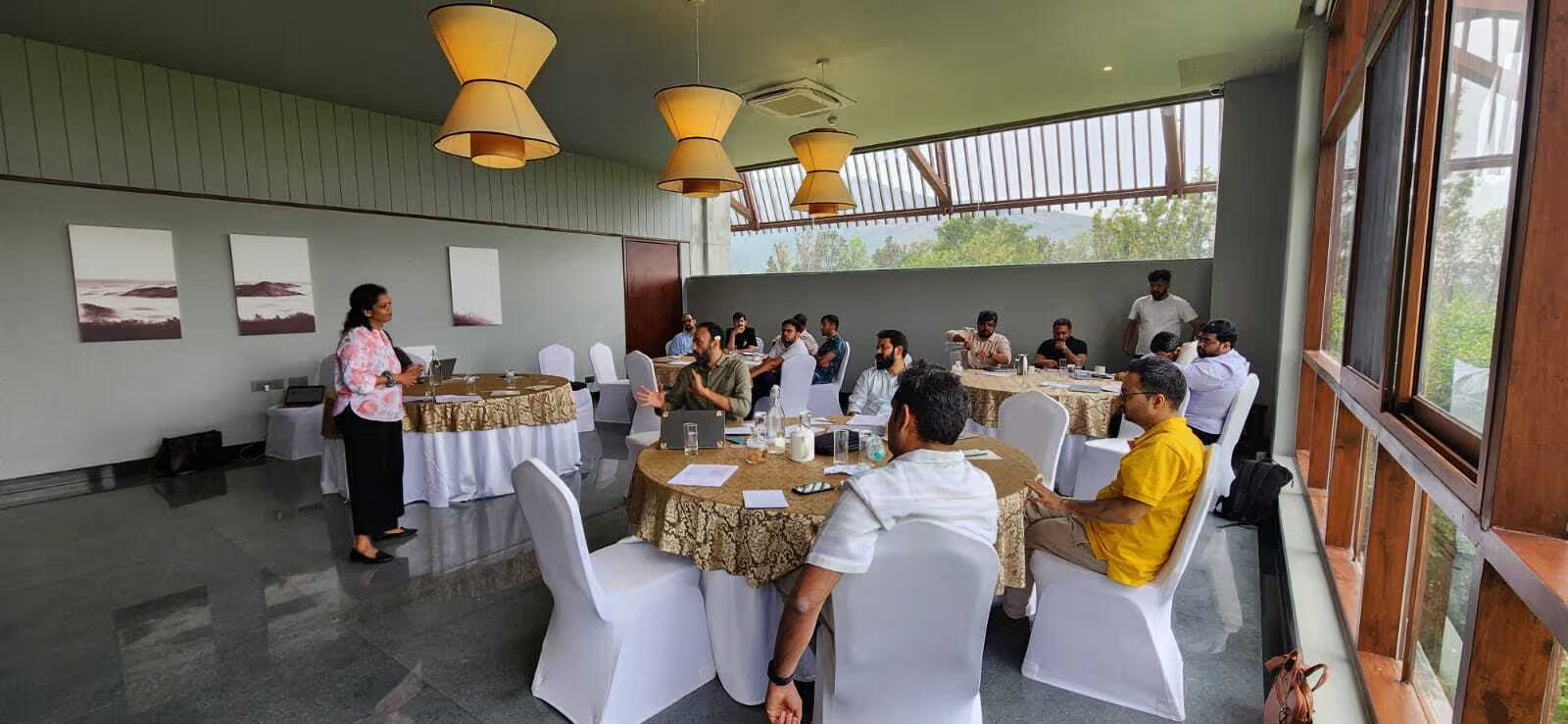Most decision-makers in talent-driven businesses of all sizes are aligned on doing more and better for their teams. As a very direct, tangible way of delivery, employee benefits are central to achieving this goal.
Ask the same decision makers on what’s holding them back and often, you will hear some version of, “this is the market standard, no real complaints.” or “we have a set process/budget, we can’t deviate from,” or “we don’t have the bandwidth now, let’s reconsider this next year.”
Of course, tomorrow, let alone “next year” never comes and so, “this is what everyone (including us) is doing” has become the recurring theme. And yes, no one loses their jobs for doing what everyone else is doing!
On the contrary, step into a management team meeting and you will hear the following questions asked of people success professionals: “How are we doing versus peers? Are we competitive? Where do we stack up?”
And often, the answer is someone’s personal experience or a traditional benchmarking exercise based on one or more of the following:
- Number of employees
- Annual Revenue
- Industry/Sector
- Location
We have to question the ‘status quo’
While there is alignment on pursuing a better approach, there are at least two constraints placed upon most organisations in this pursuit:
-
How advisors/consultants conduct this benchmarking: When organisations do benchmarking exercises for their employee benefits or compensation, they are often fed benchmarks that have been setup on the basis of number of employees, potentially juxtaposed by industry.
- The seller or supply-side setup: Nearly every insurance company and intermediary’s GTM teams are also segmented either by size of organisation (# employees), region, client industry and/or revenue earned from the client.
As a result, most organisations also end up thinking about their own employee benefits by aligning themselves along these constraints.
Introducing the Experience-Benefits (‘EB’) Matrix
Based on our experience consulting 10,000+ organisations at Plum, we realised that while size, revenue, industry and location are useful vectors, organisations often have a very specific set of expectations and goals when it comes to talent and to employee benefits that are often unconnected to these vectors.
These were far more important but one of the key challenges was that these were often poorly or never articulated.
At the risk of oversimplification, I bring to you our early attempt at better segmenting, and hence serving, organisations:
The Experience-Benefits (‘EB’) Matrix.

Want to figure out which quadrant you lie on? Click here to book a free benchmarking call.
We tried to find a pattern in the organisations’ spending behaviour on employee benefits and their expectations from service providers. The x-axis measured a company's approach to budgeting for employee benefits - did they see it as a cost, or as a long-term investment? The y-axis considered a company's service expectation - did they expect a handheld, human experience, or were they more inclined towards a digital, tech-first experience?
The data is stark. The top 10% of organisations on employee benefits are not united by employee size, revenue, industry or location. In fact, this group includes organisations with as few as 10 and as many as thousands of employees and in sectors as varied as FinTech and Commercial Real Estate.
Instead, here are some of the vectors we found in common in these organisations, chief being that they had put the primary stakeholders – talent – at the center of this decision.
- Talent was viewed as a critical source of competitive advantage.
- Employee benefits were not viewed as an expenditure but an ongoing, multi-year investment that was an essential part of overall talent strategy.
- Employee benefits design was thoughtful, incorporating team feedback and unsaid needs, and contextualised within the broader talent and business strategy.
- Employee benefits were an important lever for one or more of the following: retention, hiring, employee productivity, total employee compensation and employer brand.
- Long-term horizon ensured that there was a willingness to invest with partners to build out plans, products and solutions for their teams.
Making better decisions for your team’s employee benefits
The development of this thesis and the EB Matrix also made it clear that many organisations were inadvertently making decisions on employee benefits disconnected from their broader strategy, philosophy and culture.
In addition to more thoughtful benchmarking and alignment within the matching quadrant of the EB Matrix, we propose that you add at least the following checks to your decision-making process:
1. Consistency of decision-making and indirect effects e.g. does it make sense to curtail or cap spend on much-loved employee benefits e.g. coverage for maternity, for parents or for out-patient treatments while simultaneously increasing spend on a new office space or more parties for your teams to drive their morale and productivity?
2. Alignment with the broader strategy and culture e.g. does it make sense to pursue a lowest cost (L1) strategy on employee benefits, allocating 0.5% of the compensation budget, while also pursuing a strategy to build a talented, high performance team?
3. Team’s preferences and expectations e.g. does your young team want a people-led, paper-heavy service experience for their benefits or would they likely prefer a simple, intuitive digital solution that they are so used to in every other aspect of their lives?
If you identify as an organisation where talent is the needle-mover, you want to be sure that you are on the right side of the EB matrix. Pun intended. And you certainly do not want to be anywhere near the bottom-left of the EB matrix.
Moving your organisation to the right side of the EB matrix and into “The 2% Club”
Plum’s flagship report, State of Employee Benefits ’24 showed that most organisations - regardless of their industry, location or size allocate less than 1%(!) of their employee compensation budgets toward employee benefits. This, even as many of these organisations’ success hinges on attracting, retaining and enabling the best talent.
This allocation is taken sometimes at the cost of curtailing benefits much loved by the team and delivers savings that are almost always offset by the cost of the time spent by multiple team members on negotiating this notional, observable cost down to the last rupee.
What’s more unfortunate is that this approach ignores the "total cost", which would include the indirect and long-term costs related to attrition, productivity and talent density, among others. It is often about today’s “price” and seldom about “value”.
The same research has also shown a simple way forward. Taking a cue from organisations on the right side of the EB matrix, we found that organisations could deliver significantly better benefits that would put them on the right side of the EB matrix while enjoying gains in all the difficult areas e.g. hiring, retention, productivity, simply by reallocating (not increasing) their compensation budgets by just 1% i.e. taking their allocation from <1% closer to 2%.
And yes, don't take my word for it. Run your own numbers, try it out! I look forward to welcoming you to “The 2% Club”.
.avif)








.avif)










.avif)




